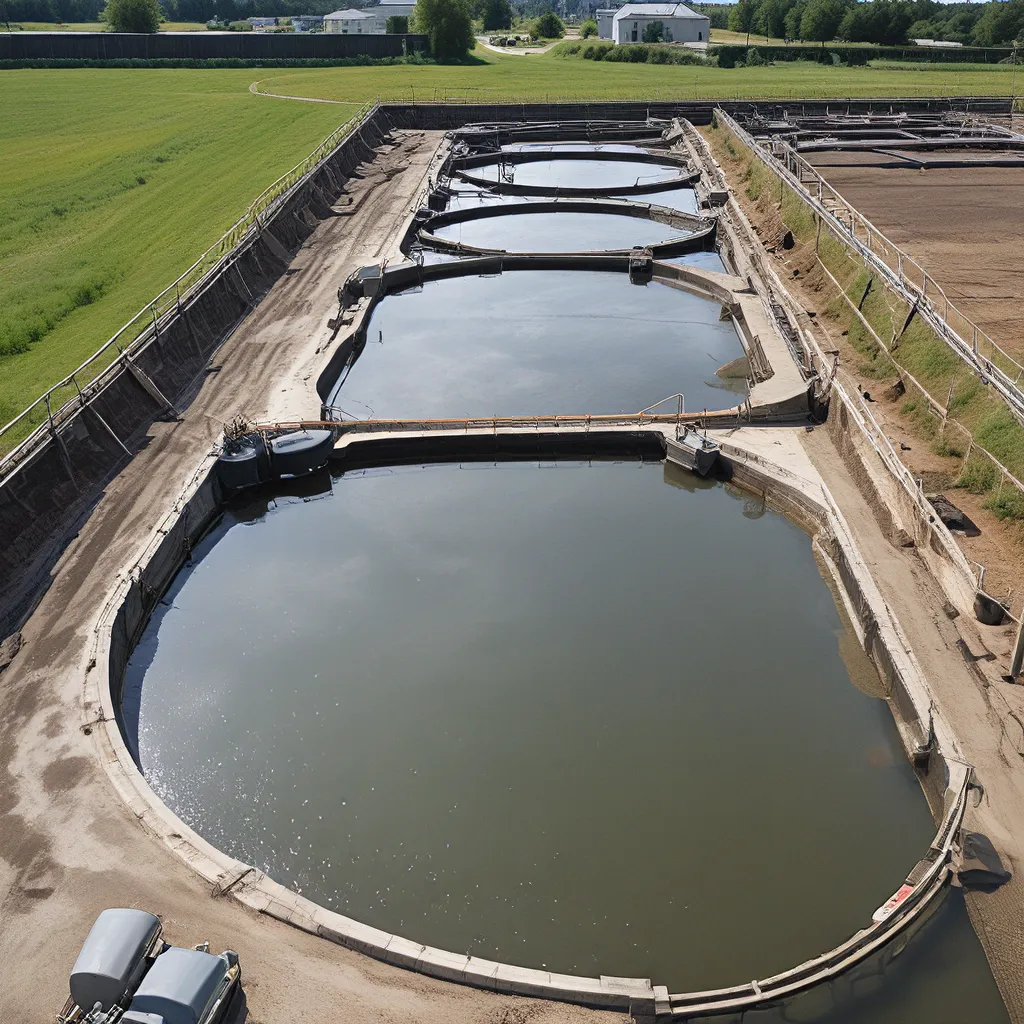
As someone deeply passionate about environmental sustainability, I’ve always been fascinated by the critical role wastewater treatment plays in preserving our precious natural resources. It’s a topic that’s often overlooked, but the truth is, the way we manage our waste has far-reaching consequences for the health of our ecosystems and communities.
One of the most pressing issues in this field is the challenge of nutrient removal – specifically, the removal of nitrogen and phosphorus from wastewater. These nutrients, while essential for plant growth, can wreak havoc on aquatic environments when present in excessive amounts.
The Nutrient Pollution Problem
Picture this: every year, 62 million tons of nitrogen are added to our coastal waters through wastewater discharge. That’s a staggering amount, and it’s just the tip of the iceberg when it comes to the pollution crisis we’re facing. Nutrient overloads can lead to algal blooms, dead zones, and the degradation of sensitive habitats like coral reefs and seagrass meadows.
The impacts of this pollution are far-reaching, affecting human health, biodiversity, and even the climate. It’s a complex, multi-faceted problem that requires a comprehensive, collaborative approach to solve.
Conventional Wastewater Treatment Shortcomings
Traditionally, wastewater treatment plants have relied on centralized, energy-intensive systems to remove nutrients. While these systems have made progress, they often fall short in the face of growing populations, aging infrastructure, and the effects of climate change.
Take the issue of combined sewer overflows (CSOs) – a legacy problem in many cities. During heavy rainfall, these outdated systems can’t handle the influx of stormwater, leading to the discharge of untreated or partially treated sewage into our waterways. In New York Harbor alone, over 27 billion gallons of raw sewage and polluted runoff are released annually from CSOs.
Even when wastewater treatment plants are functioning as designed, the nutrient removal process can be resource-intensive, energy-demanding, and unsuitable for smaller facilities. It’s clear that we need a more holistic, sustainable approach to tackle this challenge.
Innovative Solutions for Nutrient Removal
Fortunately, there’s a growing movement of innovative, nature-based solutions that are revolutionizing the way we think about wastewater treatment. These approaches harness the power of natural ecosystems to remove nutrients and other pollutants, often in a more cost-effective and environmentally friendly manner.
One promising example is the use of constructed wetlands. These engineered systems mimic the natural filtration processes of wetlands, effectively removing nutrients, pathogens, and even heavy metals from wastewater. They can be adapted to a wide range of scales, from small rural communities to large urban centers, making them a versatile option.
Another innovative solution is the Revolving Algal Biofilm (RAB) system, developed by a startup in Iowa. This technology uses algae growing on conveyor belts to feed on the nutrients in the wastewater, removing nitrogen and phosphorus in the process. The algae can then be harvested and repurposed as a valuable fertilizer or biofuel.
Embracing the Circular Economy
But the true potential of these solutions lies in their ability to transform waste into a valuable resource. This aligns with the principles of the circular economy, which aims to minimize waste and maximize the reuse of materials.
By recovering and repurposing the nutrients in wastewater, we can reduce our reliance on synthetic fertilizers, which are energy-intensive to produce and contribute to further environmental degradation. In fact, experts estimate that the human waste produced annually could replace 25% of the nitrogen and 15% of the phosphorus used in agriculture globally.
Alpha Wastewater is at the forefront of this movement, helping communities implement innovative nutrient removal technologies and embrace the circular economy. Their expertise and commitment to sustainability are making a real difference in the fight against nutrient pollution.
The Power of Collaboration and Public Engagement
But technology alone won’t solve this problem. As Stephanie Wear, a senior scientist at The Nature Conservancy, points out, “Behavior is as much a part of the solution as the technology.”
That’s why engaging the public and fostering collaboration between the public and private sectors is crucial. We need to overcome the taboo around discussing human waste and help people understand the importance of sustainable wastewater management.
By educating communities, partnering with local organizations, and encouraging open dialogue, we can drive the societal change necessary to implement these innovative solutions at scale. It’s a long and at times uncomfortable process, but it’s one that’s essential for the health of our planet.
A Hopeful Future
The challenges we face in nutrient removal and wastewater treatment may seem daunting, but I’m truly optimistic about the future. As research and innovations continue to advance, and as we work to bridge the gap between technology and public engagement, I believe we can make significant strides in tackling this crucial environmental issue.
It’s a journey that will require patience, collaboration, and a willingness to think outside the box, but the rewards are immense. By embracing the circular economy and harnessing the power of nature-based solutions, we can protect our waterways, support biodiversity, and build a more sustainable future for generations to come.
So let’s roll up our sleeves and get to work. The health of our planet – and our own well-being – depends on it.